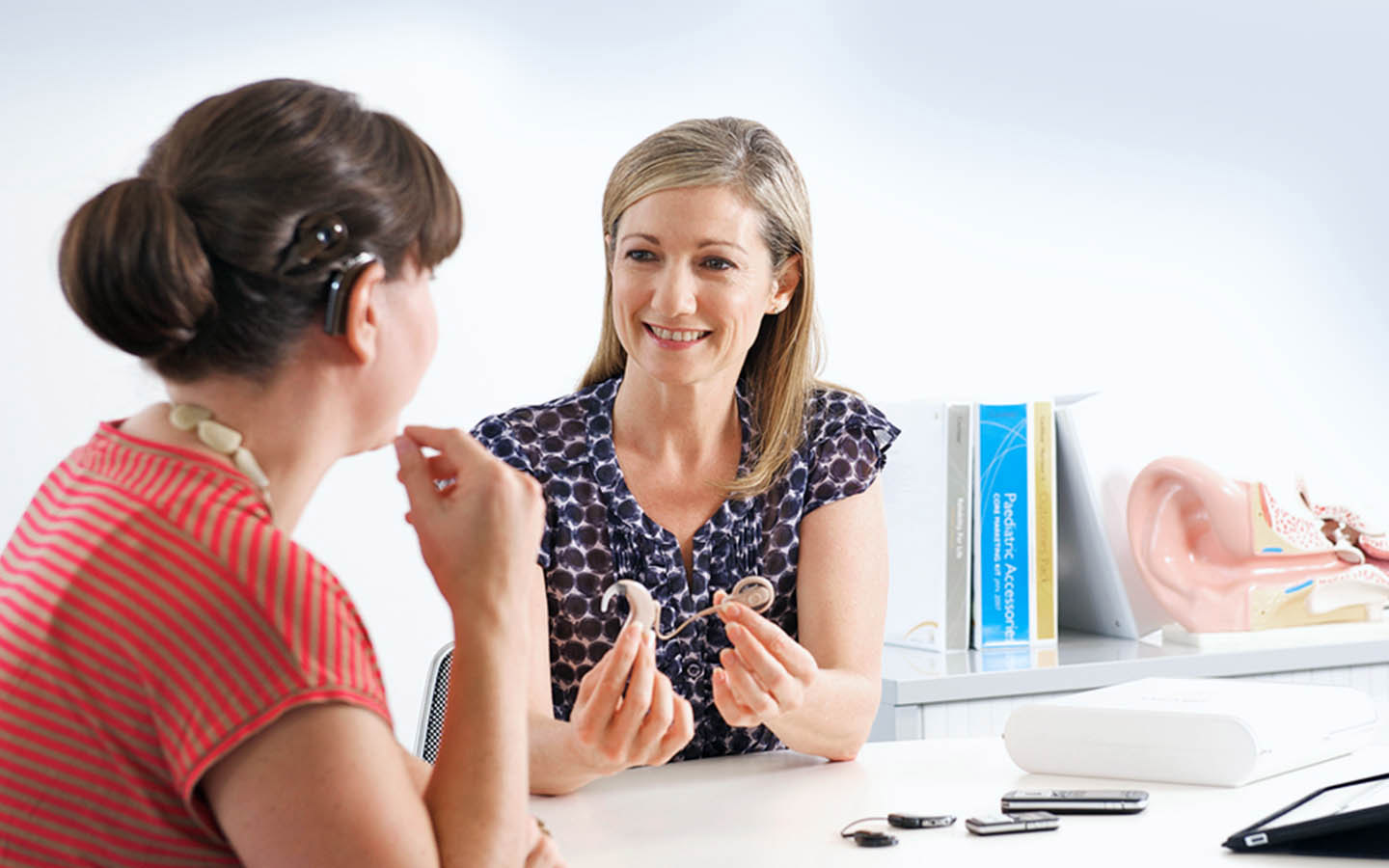Bone conduction implants
Bone conduction implants have the potential to make engaging in conversations and everyday activities easier. Learn how they might be able to help you or your child.

What you'll find on this page
- How bone conduction implants work
- The main components of a Cochlear™ Baha® System
- The benefits of bone conduction implants
Bone conduction implants help those with conductive or mixed hearing loss or single-sided deafness. They work by bypassing the damaged outer or middle ear and sending clearer, more crisp sound directly to the inner ear using bone conduction.1
How does a bone conduction implant work?
If you or your child has a damaged or missing part of the outer ear or middle ear, it can sometimes be difficult for sound to reach the inner ear which then sends sound to the brain. A bone conduction implant works by bypassing the parts of the ear that aren't working.
The sound vibrations are captured and sent through the skin to the implant that is located in the skull bone and then onto the healthy inner ear.
Our bone conduction implant system includes the following main components:
- External sound processor – our sound processors provide different levels of power to best fit your hearing needs throughout your or your child's lifetime.
- Connection between sound processor and implant – we offer a magnetic connection as well as a connection through an abutment.
- Internal implant – all of our bone conduction solutions use the stable foundation of our BI300 Implant with proven long-term reliability and sound transmission.2
How the Baha® Connect System works
Will you benefit from a bone conduction implant?
Research and decades of experience demonstrate that a bone conduction solution may help you:1-5
- Hear better, even in noisy situations
- Enjoy a clean, more natural sound because bypassing the damaged part of your ear may reduce the amount of amplification needed to help you hear better
- Hear sounds as if they are coming from both sides
- Become more aware of your surroundings, increasing your ability to hear important sounds
- Enjoy improved speech recognition (compared to hearing aids)
Try a bone conduction solution, then decide
If you've been told that a bone conduction hearing solution is a treatment option for your hearing loss, you can try a Cochlear™ bone conduction solution before deciding whether to get an implant. Make an appointment with a Hearing Implant Specialist and they will be able to advise you if you may benefit from a bone conduction solution. Find one today.
Find a Hearing Implant Specialist near you
Disclaimer
Please seek advice from your health professional about treatments for hearing loss. Outcomes may vary, and your health professional will advise you about the factors which could affect your outcome. Always read the instructions for use. Not all products are available in all countries. Please contact your local Cochlear representative for product information.
Views expressed are those of the individual. Consult your health professional to determine if you are a candidate for Cochlear technology.
For a full list of Cochlear’s trademarks, please visit our Terms of Use page.
References
- Lin LM, Bowditch S, Anderson MJ, May B, Cox KM, Niparko K. “Amplification in the rehabilitation of unilateral deafness: speech in noise and directional hearing effects with bone-anchored hearing and contralateral routing of signal amplification.” Otology & Neurotology. 2006;27(2):172-82.
- Flynn MC, Sadeghi A, Halvarsson G. Baha solutions for patients with severe mixed hearing loss. Cochlear Implants Int 2009;10 Suppl 1:43-7.
- Hol MK, Snik AF, Mylanus EA, Cremers CW. Long-term results of bone anchored hearing aid recipients who had previously used air-conduction hearing aids. Arch Otolaryngol Head Neck Surg 2005 Apr;131(4):321-5.
- Watson GJ, Silva S, Lawless T, Harling JL, Sheehan PZ. Bone anchored hearing aids: a preliminary assessment of the impact on outpatients and cost when rehabilitating hearing in chronic suppurative otitis media. Clin Otolaryngol 2008;33:338–342.
- Snik AF, Mylanus EA, Proops DW, Wolfaardt J, Hodgetts WA, Somers T, Niparko JK, Wazen JJ, Sterkers O, Cremers CW, Tjellström A. Consensus statements on the Baha system: Where do we stand at present? Ann Otol Rhinol Laryngol 2005 Dec;114(12) Suppl 195:1-12.






